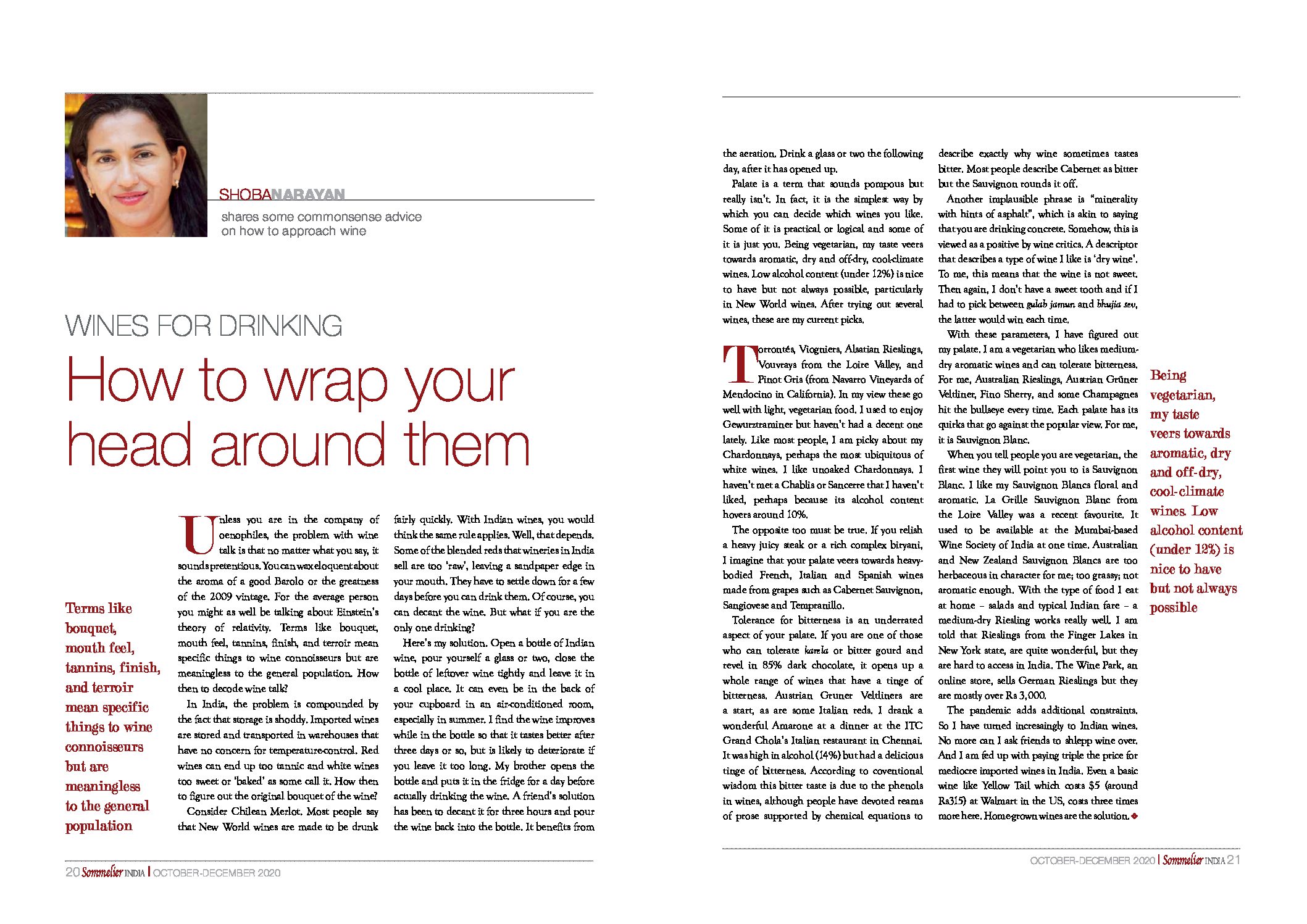
Palate is a term that sounds pompous but really isn’t. In fact, it is the simplest way by which you can decide what wines you like. Some of it is practical or logical and some of it is just you. Being vegetarian, my taste veers towards aromatic, dry and off-dry, cool-climate wines. Low alcohol content (under 12%) is nice to have but not always possible, particularly in New World wines. After trying out several, these are my current picks. Torrontés, Viogniers, Alsatian Rieslings, Vouvrays from the Loire Valley, and Pinot Gris (Navarro Vineyards of Mendocino if you can get them). These in my view go well with light vegetarian food. I used to like Gewurztraminer but haven’t had a decent one lately. Like most people, I am picky about my chardonnays, perhaps the most ubiquitous of white wines. I liked unoaked Chardonnays. I haven’t met a Chablis or Sancerre I haven’t liked, perhaps because its alcohol content hovers around 10%.
The opposite too must be true. If you relish a heavy juicy steak or a rich complex biryani, I imagine that your palate veers towards heavy-bodied French, Italian and Spanish wines made from grapes such as Cabernet Sauvignon, Merlot and Tempranillo.
Tolerance for bitterness is an underrated aspect of your palate. If you are one of those who can tolerate karela or bitter gourd and revels in 85% dark chocolate, then it opens up a whole range of wines that have a tinge of bitterness. Austrian Gruner Veltliners are a start, as are some Italian reds. I drank a wonderful Amarone at a dinner at the ITC Grand Chola’s Italian restaurant in Chennai. It was high in alcohol (14%) but had a delicious tinge of bitterness. Wine wisdom says this bitter tinge is due to the phenols in wines and otherwise moderate people have devoted reams of prose supported by chemical equations to describe exactly why wine becomes bitter (and they say this as if it is a good thing). Most people describe Cabernet as bitter but the Sauvignon rounds it off. Another quixotic phrase is “minerally with hints of asphalt”, which is akin to saying that you are drinking concrete. Somehow, this is viewed as a positive by wine critic Robert Parker and his acolytes. A phrase and type of wine I like is “dry wine”. To me, this means that the wine is not sweet. Then again, I don’t have a sweet tooth and if I had to pick between gulab jamun and bhujia sev, the latter would win each time.With these parameters, I have figured out my palate. I am a vegetarian who likes medium-dry aromatic wines and can tolerate bitterness. For me, Australian Rieslings, Austrian Grüner Veltliner, fino sherry, and some Champagnes hit the bullseye every time. Each palate has its quirk that goes against the grain. For me, it is Sauvignon Blanc.
When you tell people you are vegetarian, the first wine they will point you to is Sauvignon Blanc. I like my Sauvignon Blancs floral and aromatic. La Grille Sauvignon Blanc from the Loire Valley was a recent favourite. It used to be available at the Mumbai-based Wine Society of India. Australian and New Zealand Sauvignon Blancs are too herbaceous in character for me; too grassy; not aromatic enough. With the type of food I have at home—salads, and typical Indian fare—a medium-dry Riesling works really well. I am told that Rieslings from the Finger Lakes in New York, US, are quite wonderful, but they are hard to access in India. The Wine Kart, an online store, sells German Rieslings but they are mostly over Rs.3,000.
The pandemic adds additional constraints. So I have decided to turn to Indian wines. No more can I ask friends to shlepp wine over. And I am fed up of pay triple the price for mediocre wines in India. Even a basic wine like Yellow Tail costs $5 (around Rs.315) at Walmart in the US. Here it costs three times more. Home-grown wines are the solution.





Leave A Comment